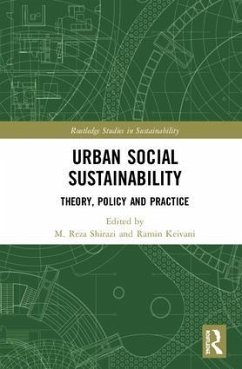
Spaces of Social Exclusion
Versandkostenfrei!
Versandfertig in 1-2 Wochen
255,99 €
inkl. MwSt.
Weitere Ausgaben:

PAYBACK Punkte
128 °P sammeln!
Social exclusion is a subject of considerable interest across the social sciences, and this topical book, international in scope and wide-ranging in content, provides students of planning and urban studies with a valuable source of information.
In all developed countries, a minority of the population suffers from deprivation. This book explores the forms of this contemporary economic and social disadvantage and in particular, its social and spatial causes.














